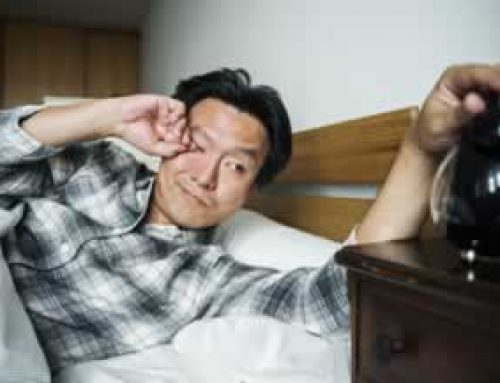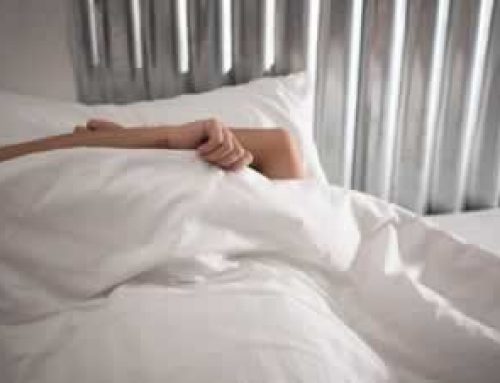11 Steps to the Bedroom Of Your Dreams
Creative Ways You Can Improve Your Bedroom for Sleep Success
We spend, on average, a third of our lives either sleeping or attempting to sleep. Sleep is essential for restoring our brain and bodies. It helps us save memories, clear away waste, and strengthens our immune system. Plus, let’s be perfectly honest, it’s of the most enjoyable things we do every day. That is unless you’re not getting enough quality sleep. Having a bedroom designed for sleep is key to getting to sleep quickly, staying asleep, and waking up refreshed. To help you create the bedroom of your dreams, we’ve created this list of creative ways you can improve your bedroom for sleep success.
Pick the perfect color
Paint the walls in your bedroom a cool color that you find soothing. Browse shades of gray, blue-gray, blue, taupe, soft gray-greens, or muted purples in a pale or dark shade when selecting your paint color. Most importantly, the color you choose should make you feel calm and relaxed. Be sure to select a matte finish, so your walls don’t amplify light by reflecting it.
Leave colors like yellow, red, orange, and bright greens for rooms you’ll spend time in during the day.
Keep the air fresh
Being able to breathe freely is key to getting a good night’s sleep. If the air in your bedroom is even the slightest bit stale, you should let in some fresh air outside occasionally and use an air purifier to eliminate dust, pollen, pet dander, mold spores, bacteria, and dust mites from the air in your bedroom.
If you’re looking for the perfect scent to use in your room, go for lavender. Research shows that it delivers sedative properties, decreasing heart rate and blood pressure. In fact, a Wesleyan University study found that women who sniffed lavender oil before bed experiences, on average, 22 percent more restorative slow-wave sleep.
Keep it clean
Having a clean room helps to relax you. One survey showed that 66% of people say a clean bedroom makes for better sleep. Taking 5 minutes in the morning and evening to tidy up can make all the difference.
While you’re tidying up, take a moment to make your bed! According to a poll by the National Sleep Foundation, 19 percent of people who get up and make their bed every morning are more likely to report a better night’s rest.
Keep work out
Your bedroom should be designated for sleep, not work or exercise. Resist the temptation to make your bedroom pull double or triple duty by giving in to the urge to bring your waking life into your bedroom. It’s no place for folding laundry, doing bills or work you brought home, or getting in your workout on your exercise bike or treadmill. These things serve as distracting reminders to all that you need to do when trying to get to sleep. Plus, if you use your bed for things other than sleeping or sex, your body may begin to associate it with waking activities, leading to difficulty falling asleep.
Go Dark
Your body needs true darkness to get quality sleep. Exposure to light before bed and while in bed can cause your body to produce less melatonin, the hormone that is responsible for allowing your body to sleep. This includes being able to detect even the smallest amount of light through closed eyelids (such as from your night light or alarm clock) to exposure to blue light from electronic devices. In fact, research has shown that exposure to ambient light while you sleep can cause misalignment of your circadian rhythms. Ideally, your bedroom should be as dark as possible without your bumping into things.
Install dimmers so you can slowly bring down light levels as you prepare for sleep.
Switch out your energy-efficient bulbs with old-school Edison bulbs in bedside lamps for a warm, soothing and natural glow instead of a sleep-stealing harsh, artificial light.
Invest in a good set of window shades or even blackout curtains to eliminate light coming in from outdoors.
While alarm clocks with red numbers are less disruptive than those with white or blue digits, you should still turn yours to face away from you.
Finally, put on a sleep mask when you’re ready to go to sleep. It’s an inexpensive solution to ensure the light stays out!
Create a chill
While there’s considerable debate on the perfect sleeping temperature, everyone agrees that it needs to be cool in order for you to get a good night’s sleep. If it’s too hot or too cold, it will make it harder to sleep well. A cool room helps make you drowsy as your core body temperature falls.
The ideal temperature for most people sleeping falls somewhere between 65-72 degrees F. Finding your perfect temperature may take a bit of testing. You want it to be just chilly enough so that you need a blanket, but not so cold that it keeps you awake.
Comfortable bed
It all starts with the foundation for your sleep – your mattress. It doesn’t matter how many other tweaks you make to create the perfect bedroom environment if your bed is uncomfortable. Think of what you spend on your mattress as one of the most important investments you can make. If you’re not getting great sleep, you don’t perform well at work, and it damages your relationship with others because your memory, mood, concentration, and health are all impacted. Buy the best mattress you can reasonably afford – it’s worth it.
Once you have the right foundation, you want to maximize your comfort by having quality sheets, blankets, and pillows. Most people find long-fiber or “Supima” cotton sheets with at least a 300-thread count to be best. As for blankets, you want something with a little weight that provides just the right amount of warmth. Natural fiber blankets tend to breathe the best and help support regulating your body heat.
Having the right pillow for your sleeping position is also critical to your sleep quality. If you’re a side sleeper, you’ll want to get a larger pillow that provides proper head and neck support. Back sleepers will want to look for a little firmer pillow that contours to their head well. Stomach sleepers will want a thinner, more solid, yet cushiony pillow that is a maximum of three inches thick.
Two blankets for two people
If you’re sleeping with a partner, you can cut down on problems caused by movement and body heat by making your bed with separate sheets and blankets for each of you. To do this, you’ll need two twin top sheets and blankets for a king or queen size bed. Slightly overlap them in the middle when making the bed. That way when one of you rolls over, taking the blanket with you, they will separate in the middle, giving each of you your own cozy blanket and sheet so you can get a good night’s sleep.
Pick your color of noise – pink, brown, or white
Most people find neutral types of sound helpful in getting to sleep and staying asleep. Pink, white, and brown noise can all be used to help you relax and even drown out other noises that can keep you awake.
Pink noise is the steady, uninterrupted sound produced by things like fans or gadgets. This kind of sound reminds you of the sound of the wind rustling leaves on trees or the falling rain. It’s the sort of sound that has a perfectly even octave and consistent frequency that regulates your brain waves resulting in super restful sleep. One research study showed that 75 percent of study participants reported more restful sleep or nap time with pink noise than with silence.
White noise is the kind of sound that people typically use to mask background sounds. It is a consistent, hearable noise that is consistent across all frequencies, which gives its power to mask other kinds of sounds. It works well for masking sounds like the neighbor’s dog, traffic, and other environmental noise.
Brown (Brownian) noise, also known as red noise, is a deeper version of pink noise – think strong wind versus light, consistent wind ruffling the leaves or the sound of the ocean or a big waterfall. It’s similar to white noise; however, it has a random pattern. It is named for the “random walk” pattern produced by Brownian motion since it mimics it. You can use it to block out annoying noises like trains, planes, thunder, or the bass coming from your neighbors stereo.
Selecting the perfect color of noise to help you sleep is really a personal preference. While pink noise can be easily produced by turning on the ceiling fan in your room, white and brown noise are best provided by noise generators. These are widely available online.
Create an electronic-free zone
As technology use has grown, electronics have crept into the bedroom making all the more difficult to get quality sleep. Did you know that it’s estimated that the average person now spends nearly 9 hours of their day on electronic devices – which is more than they sleep? From the blue light produced by your TV, laptop, tablet, and phone to the interruptions they create with their ringing and beeping, they’re sneakily wreaking havoc on your sleep.
It’s time to evict them from the bedroom! To keep your brain in a rest mode in the bedroom, your TV, computer, and phone need to spend the night elsewhere. Screen time should end an hour before sleeping to prevent the blue light they emit from preventing your melatonin levels from rising in preparation for sleep – this includes TVs, tablets, etc.
If you absolutely must have your phone in your bedroom, turn off all unnecessary alerts using night mode and keep your phone face down, so your sleep isn’t disturbed.
- 4 in 10 people will check their phones during the night if it goes off. And 81% of users will keep it on throughout the evening.
- Almost 80% of people who seek medical attention for exhaustion or difficulty sleeping keep phones in bed with them.
Put pets to bed
While some people say they feel like they get good sleep while sleeping with their pet, research shows that this isn’t the case for most people. Research published in Mayo Clinic Proceedings has found if the dog was on the bed as opposed to just in the room, human sleep efficiency decreased because human-dog co-sleeping results in owners waking up more throughout the night than those who didn’t sleep with their pet in the bed. A second research study found that 63% of pet owners who shared their bed or bedroom with their pet experienced poor sleep quality and 30% reported waking up because of their pets at least once a night, supporting the Mayo Clinic’s findings.
This kind of interrupted sleep impacts you as if you only slept for a few hours; it results in attention, mood, and daytime sleepiness issues.
To get high-quality sleep, it’s best to keep your pets in a different room. If that won’t work for you for some reason, at least keep them off your bed. If your pet is a noisy sleeper, you should consult your vet to rule out any medical problems – they may have sleep problems themselves.
Next Steps
Once you’ve created the bedroom of your dreams- the perfect sleeping environment, it should be easy to get a good night’s sleep. If it’s still not happening, then it’s time to find out if there’s something health-related causing your sleep problems. Vitalistics can help! Take our online sleep assessment that assesses your sleep for over 30 types of possible sleep problems and delivers insights and action steps that you can use to improve your sleep. If the assessment shows signs of sleep apnea or other sleep disorders, arrange a visit with your physician today, and conduct your home-based diagnostic testing with Vitalistics.







































